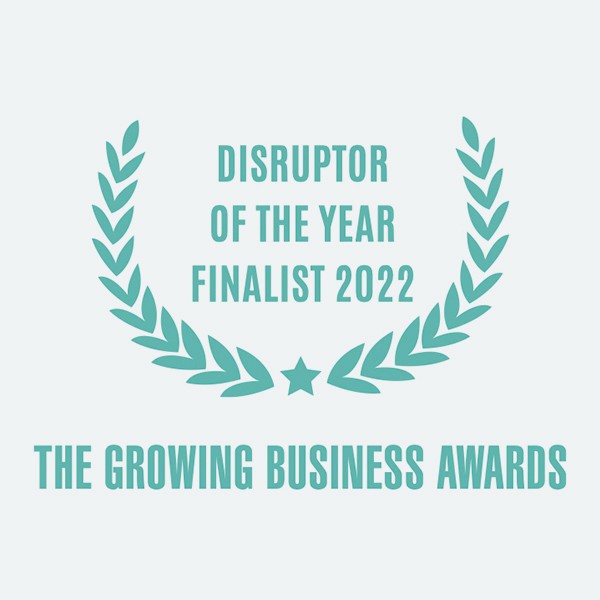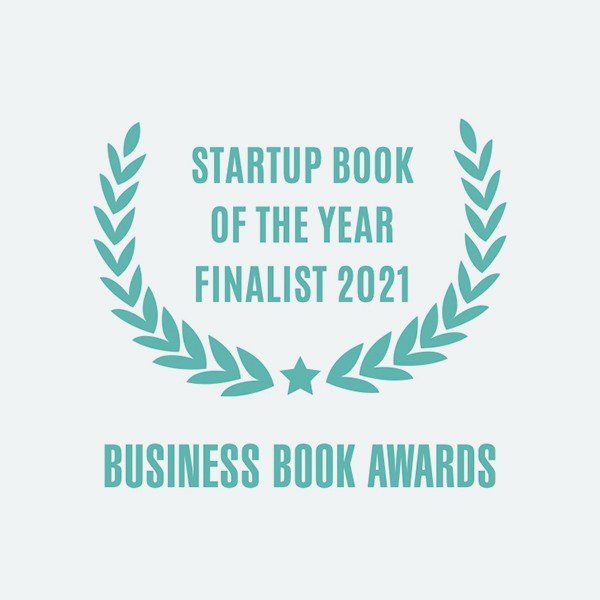

The Four Key Questions Investors Will Ask You
4th March 2022
Becoming an investable entrepreneur requires so much more than simply having an incredible product or service. A prospective investor will want to be satisfied with a whole range of other factors before they’ll back your business, and what those factors are will largely depend on the nature of your business and the type of investment round you’re entering.
However, even though it’s impossible to predict exactly what an investor will ask you once you’re in the room (which is why it’s essential to be prepared and ready for anything), there are four questions investors will surely drill down into.
Four Questions to Prepare For:
1. What’s your current proof?
Does your market want what you’re offering, does it need what you’re offering, and will there be ample opportunity for your business to grow?
If you’re an early stage company going into an early stage round, you’ll be limited by the kinds of proof you can produce. It’s unlikely you’ll be able to dazzle your investor with customer numbers and conversion rates, and they’ll realise that, so hard figures won’t be what they’re looking for.
Related: How to Convince Investors: The Five Objectives You Must Meet in Order to Win Over Investors
What they’ll be looking for is ‘proof of concept.’ They’ll want to be sure that your product is the right fit for your market, that you thoroughly understand your market, and that what you’re offering will meet the needs and expectations of your customers. They’ll want to see you’ve done your homework. The more investment you’re trying to raise, the more homework they’ll have expected you to do.
If you don’t already have paying customers and impressive growth metrics, there are many ways you can prove your concept to show the viability of your product or idea.
- Conduct Focus groups, surveys, and Q&As to get a clearer understanding of your potential customers and their pain points. Use these to find out how your product or service address those pain points to make their lives easier and why your customers will want to buy it. Customer feedback is arguably the very best kind of proof of concept because it shows you’ve engaged with your audience and you’re already taking steps to get them onside and build a loyal customer base.
- Talk to industry experts to prove that what you’re delivering dovetails with what your industry needs. If the best minds in your sector have validated what you’re doing, that will go a long way to building your investor’s confidence.
- Create an early stage proof of concept and give it to a group of beta users to test. The feedback you receive will enable you to hone your product even further to meet the demands of your market. It will show an investor that you’re already using your limited resources to their fullest, and your potential customers are confirming you’re on the right track.
The level of proof on concept (PoC) you build will vary depending on your stage of development, internal capabilities, and budget. But, as a general rule of thumb, if you’re not embarrassed by it (i.e. it’s nothing like your ultimate vision) then you’re spending too much time building and not enough time testing. One of the best early stage PoCs we’ve seen was for a mobile app. The flow of the user journey was printed out as black text on coloured pieces of paper. Each of these “screens” formed a step in the process, depending on what the user clicked. The founder took this to a focus group of his target audience and manually took people through the app process. He recorded this as a video and asked them to complete a survey at the end. This was enough evidence to secure his small pre-seed round so he could build a full clickable prototype where he could repeat the test at a larger scale.
If you’re a later-stage company going into a later-stage round, your investor will look for a very different kind of current proof. They’ll want to know how many customers you’ve got, what your traction and conversion rates are, how you’re marketing your product, and how easy (or not) it is for you to attract and retain new customers. They’ll want to see tangible evidence that your business is establishing itself and will continue to grow, so you’ll eventually be able to reward them with a handsome return on their investment.
Whatever stage you’re at on your fundraising journey, it’s essential to keep building proof. The more proof you’ve got, the more likely it is that an investor will jump onboard.
2. What are your valuable assets?
When most people think of ‘valuable assets’, they think of ‘revenue’. To a prospective investor, the underlying valuable assets mean a lot more than that. It means everything they will own if they invest in you. Your underlying assets include:
- The intellectual property (IP) you’ve already built and how valuable it is. Is it properly protected? What are the international rights? How effectively are you monetising it? What IP are you planning to build in the future? How valuable will that be in the short and long term?
- Your sales and marketing systems and how you plan to develop them. Having a system for delivering new business regularly and in a repeatable fashion is highly valuable. The more effective these systems (i.e the better the return from your marketing spend) the more valuable your business.
- Your internal processes and operations and what is needed to develop them. Having internal systems and processes that allow you to effectively manage the operations, hire new talent and maintain a good company culture are vital assets that make the business easier to exit.
- Your current customer base and how many customers you plan to have when your company grows. Your customers are an extremely powerful underlying asset because they drive the value of your business, even when you’ve got a product that your customers are using but not actually purchasing from you.
An excellent example of this is how hard Microsoft and Facebook fought over purchasing WhatsApp. When the founders of WhatsApp decided to exit in 2014, Facebook paid $21.8bn to acquire them.
That’s an eye-watering amount, and even more eye-watering when you consider that what they bought was WhatsApp’s customer database and user growth. There was no traditional ‘revenue’ involved at all. For Facebook, the customers were the underlying assets. In 2014, more than 450 million people were using WhatsApp every month, and over 1 million new users were being added to the platform daily. With 70% of that number actively using WhatsApp every day, WhatsApp had a customer database encompassing practically the whole world. By 2020, WhatsApp had more than 2 billion users, and its owner, Facebook, had 2.8 billion monthly active users. The user base was what Facebook paid the $21.8bn for, not the revenue or profitability of the business.
Once again, how many underlying assets you hold depends upon the stage your business is at and the round you’re entering. At an early stage your understanding that these assets need to be built alongside your product, and your plan for delivering them is the key. The later stage, and the more money you’re looking for, the deeper the investor will be looking to explore your underlying assets.
3. What’s your implementation strategy?
So, you’ve got a fantastic idea. Good for you. But how are you going to implement it and turn it into a commercial success? What’s your commercialisation strategy?
Ask yourself:
- How are you going to market it?
- How are you planning to attract customers?
- How will you create your systems, build your IP, retain the customers you’ve got and keep bringing in more?
- How will you grow and scale?
For an early stage business, a lot of this will be hypothetical. An investor will still expect you to have a plan, but because your company is at the start of its journey, they’ll be more focused on how realistic your plan is and how confident they feel about your ability to make it work. At this stage, give the investor as many reasons as you can to believe in you.
Leverage your previous experience to show you understand your sector inside out. Demonstrate your creativity and tenacity, explain why your plan is what it is, and show them you’ve considered other options if a part of your implementation strategy doesn’t work.
A later-stage business will obviously be expected to show a lot more. You’ll need to produce evidence of the implementation strategy that’s got you to this point, as well as the plan you’re going to use going forward.
4. What’s the financial risk to the investor?
Regardless of the stage you’re at, a prospective investor already knows you’re at an extremely high risk. There’s never been a business seeking investment that hasn’t come with a bunch of unpredictable ‘what ifs’ attached, and that uncertainty is something an investor accepts when they decide to back you. It’s part of the territory, and the buzz of taking an educated risk to hopefully discover ‘the next big thing’ is a huge reason many investors do what they do.
But, before they’ll take that risk, they’ll still want to be confident that you understand the risks too. They’ll also want to know how you’ll manage those risks and keep their investment protected if things go wrong. They’ll often want to know:
- How you’re going to reduce the financial risk and how much money over the long term to get you to where you want to be and ultimately deliver them a healthy return on their investment.
- Whether this will be a one-off investment or whether they should expect dilution as you raise more investment later down the line to get the product to market, scale it, grow it, and exit.
- What your exit timeline is, and will they see their return in what they consider a reasonable timeframe (typically 5 years) or is this a longer term investment with little opportunity to exit in the short term, but a strong long-term return via company dividends (this is often the less attractive to most high growth investors).
- The risk of your company failing and whether you have you factored in external risks that you’ll have no control over, like economic, political, and social changes that could affect your company’s success and how effectively it operates. They’ll want to know the risks posed by the market, such as your competitors and new entrants. Fundamentally though, they are looking for a founder that is not only aware of the risks but has considered how they might mitigate those risks.
When pitching for investment, these are the four key areas your investor will undoubtedly want to concentrate on. Those that tackle Proof, Assets, Implementation and Risk. They’ll ask you a lot of other questions too, but if you can address those four elements in a way that satisfies them, they’ll be far more compelled to invest in you.
To find out everything else, you need to know to become a successful investable entrepreneur, download a free copy of Robot Mascot COO James Church’s bestselling book here.
UP NEXT:
How to Write Investment Winning Content for My Pitch Deck
How to Prepare Financial Projections for Potential Investors
Learn how to convince investors
Investable Entrepreneur takes you through our winning methodology – the process we use to increase our client’s chances of raising investment by more than 30x.
“This book will help you translate your entrepreneurial vision into something investors can get behind.”
Daniel Priestley, CEO and founder, Dent Global and four times best-selling business author

Keep up to date with what we’re up to via email






Copyright ©Robot Mascot Ltd. All rights reserved.





